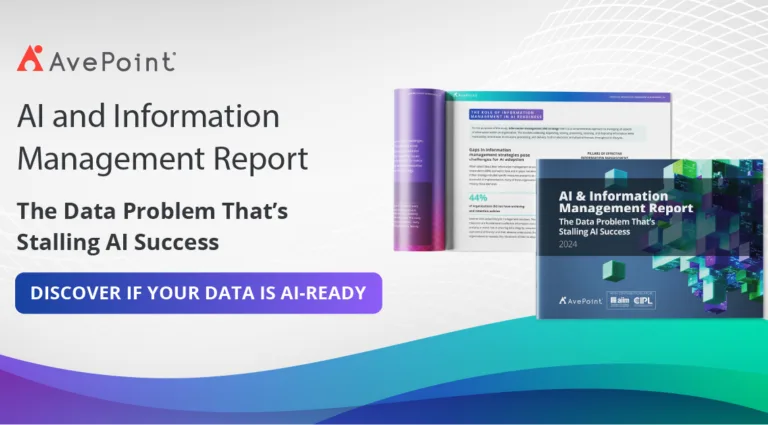As the world gets ready for the Paris Olympics in just about a month, attention has turned to a massive civil works project related to the games: the €1.4 billion ($1.5 billion) cleanup of the river Siene.
For almost a century, it’s been illegal and unsafe to swim in the river due to high levels of bacteria and industrial waste. But now, after an extremely ambitious cleanup operation, Olympic organizers are preparing to hold the swimming portions of the Olympic and Paralympic triathlons in the river, with the races scheduled to begin on a flotilla below the Pont Alexandre III, a famous bridge in the center of the city.
The successful effort to purify the Siene represents a triumph of civil engineering, but it also holds lessons for other disciplines and industries. In this blog, we’ll look at 3 data and information management lessons from the Siene cleanup project and discuss what they could mean for your organization.
1) Always Have a Backup Plan
The centerpiece of the Siene cleanup project is the Austerlitz wastewater and rainwater basin: a massive underground reservoir beneath the Austerlitz train station that’s capable of holding up to 50,000 cubic meters (175,000+ cubic ft.) of polluted water, sewage, and runoff that would otherwise have found its way into the Siene. By diverting runoff to the Austerlitz basin and implementing other pollution control measures, Paris officials have been able to make the water drastically cleaner over the last few years.
Still, while organizers are confident that the Austerlitz basin will keep the river safe for Olympic triathletes, testing has shown that prolonged periods of intense rain could make it impossible to keep the river clean. If rain falls consistently enough (as it did in the first week of June), the Austerlitz basin could easily become overwhelmed, allowing dangerous levels of harmful material to flow into the Siene, and making the water unsafe for swimmers.
While Olympic organizers have acknowledged this threat, they have also revealed that they have no backup plan in place in the event of heavy rains and high pollution. Without a viable alternative, the races would have to be postponed, which shows us why it’s always important to have a backup plan. Because organizers haven’t made one, they’re putting the Olympic triathlons (as well as their $1.5 billion investment) at risk.
This lesson doesn’t just apply to Olympic organizing — it applies to data and information management, too. According to Security Magazine, data loss events cost organizations about $5 million on average. By backing up your organization’s data, you can limit your liability, and make data loss events less costly and catastrophic.
Whether you’re managing data or planning a race, it’s always important to plan for a worst-case scenario.
2) Upfront Investment is Necessary for Long-Term Success
Even if the Olympic triathlons are postponed, organizers and city officials will still view the cleanup as a massive success both for Paris and for the country at large.
While the immediate purpose of the purification project is to make the water safe for Olympic swimmers, the Siene is also an important practical and symbolic resource for the people of France. By cleaning up the river, organizers have regenerated an important national symbol, and rebuilt a critical part of civic life. By 2025, Paris officials expect that it will be safe for anyone to swim in the river — it's hard to view that as anything other than a resounding success for the city.
It’s important to remember, though, that these results required significant upfront investment with minimal immediate payoff. The sheer scope of the project and the work required meant that construction, planning, and execution would have to take years. As a result, officials had to think long-term, committing hundreds of millions without the possibility of an immediate return on investment.
The ultimate success of the river cleanup is a useful example for leaders and information management professionals who are working to modernize and optimize enterprise data in the age of AI. The implementation of AI tools (much like gigantic, underground rainwater basins) often has a significant upfront cost, which takes time to recoup. To ensure that these investments come to fruition, leaders in AI-adopting organizations should assume a similar long-term mindset.
3) Protect Your Essential Resources
One of the biggest lessons from the Siene cleanup, of course, is that organizations — like nations or cities — should always invest in and protect their most essential resources. While officials should be commended for their work to purify the Siene, it’s also important to remember that this work was necessary because the cleanliness of the river (a critical resource for the city) was not always a top priority.
This lesson is particularly relevant for leaders in data and information management. Instead of committing a significant one-time sum to resolve years of disorganized data, organizations can save money and improve efficiency by making proactive investments in data cleanup and management over longer periods of time.
As we enter the age of AI, the integrity of enterprise data is more important than ever. The “garbage in, garbage out” hypothesis suggests that the future belongs to those who manage their data most efficiently. Organizations (like governments) should focus on protecting their most essential resource.





